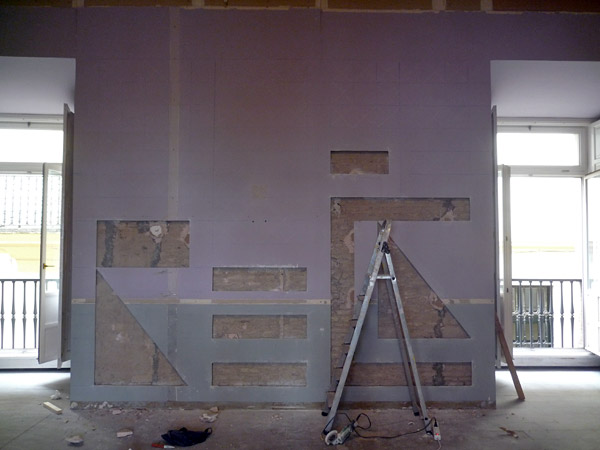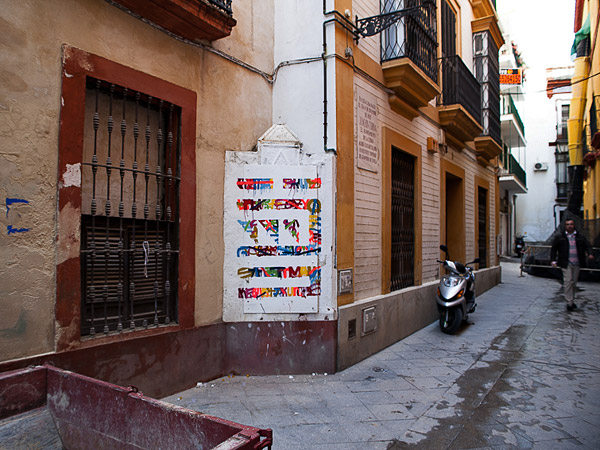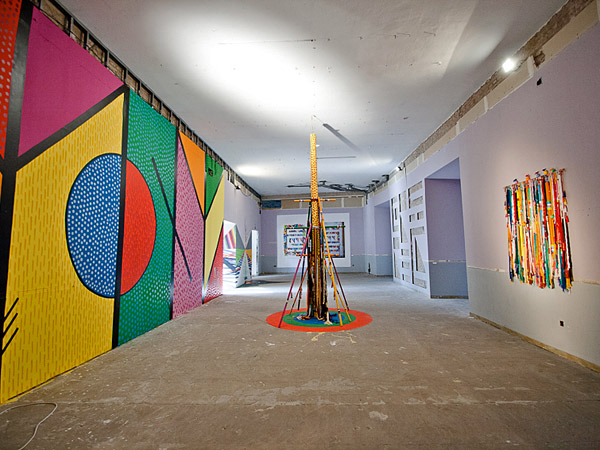Cicus
Seville, Spain
May 8th – May 31st 2012
Project curated by Delimbo
What is graffiti? What is this thing called Urban art? Is this graffiti? Art? Where are the limits? Who sets them? Esto No Es Graffiti (This is not graffiti) is an exhibition about something called and labeled in many different ways; but in essence, is vivid and spontaneous creation, with disparate methodologies, millions of points of views, and no written rules. The only thing that remains clear is that this is not Graffiti. Graffiti is in the street and it’s free, enjoy it while it still exists – Esto No Es Graffiti, text by Seleka, curator of the show for Delimbo.

For the Esto no es Graffiti show, I presented three artworks, two of them in collaboration with Seleka.
Absence
360 x 330 cm, cut off drywall
The first artwork is called Absence. Based on the name of the show and reflecting on the issue of showing graffiti in private spaces, I drew shapes cutting the drywall that protected the original brick wall. The result exhibited was the absence of the artwork, thus claiming the street as its original base.







Calle Buiza y Mensaque 3
Seleka and Eltono
200 x 150 cm each piece – Spray on 300 gr Fabriano paper – Spray on wall and photographic print
The second artwork I showed, in collaboration with Seleka, was also a reflexion around the act of showing graffiti in an exhibition space. We produced a drawing on paper and an illegal painting in the street. The painting in the street was the negative shape of the one on the paper. Inside the exhibition, we hung the drawing along with a life size picture of the illegal piece in the street.





Rompecabezas (Puzzle)
Seleka and Eltono
400 x 200 cm, wood and spray paint
For the third artwork, we assembled a wooden collage on a wall and worked on top of it; first I started with tape and then Seleka used paint. Once the piece was finished, we asked Marcos, who was in charge of installing and assembling all of the pieces in the show, to disassemble the piece and reassemble it in a different order. We did not interfere in the composition of the piece and let chance and the assembler’s criteria decide the final appearance. The idea of not controlling the final result of the work is inspired by the deterioration that can be observed in the pieces painted in the city: factors out of the artist’s control change a painting gradually until, in most cases, it disappears completely.









Photographs by Delimbo and Eltono
Thanks to Laura and Seleka, Marcos and Domingo